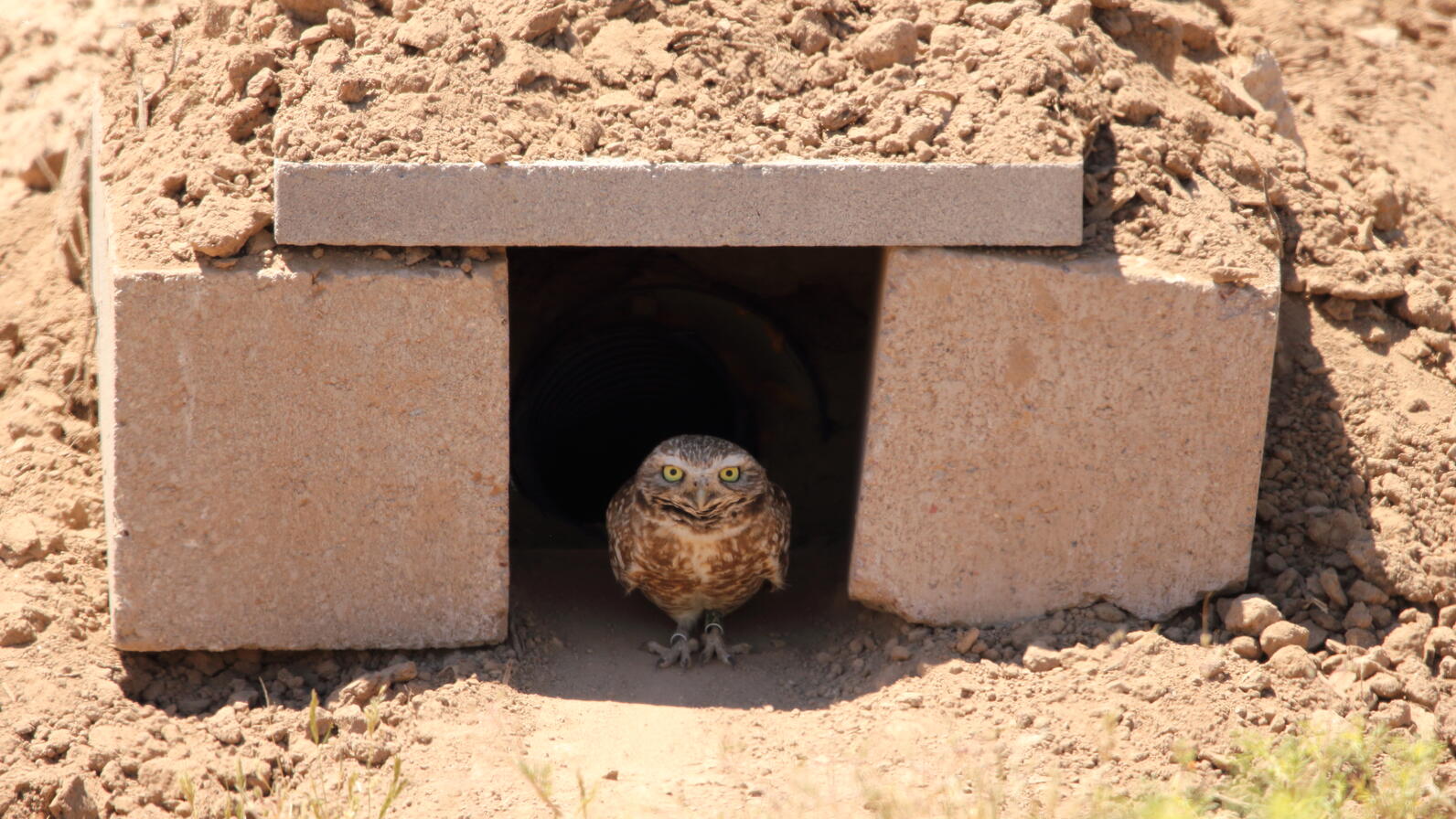Burrowing Owls (Athene cunicularia) are small, highly social, diurnal (active during the daytime) birds that live in the abandoned burrows of ground squirrels and other mammals.
Once common in the Phoenix area, these birds are disappearing rapidly due to development, urban sprawl, and climate change. Fortunately, the birds can be successfully relocated to safe sites—but these sites are becoming increasingly rare.
According to our report, Survival by Degrees, by 2080, this diurnal owl species could lose 77 percent of its current breeding range. Climate change will disrupt its winter range as well, leaving only 33 percent intact, shifting the remaining 67 percent elsewhere.
In partnership with the City of Phoenix and Wild at Heart—an Arizona-based raptor rehabilitation center—Downtown Owls began in 2013 as an urban wildlife habitat creation project in the Rio Salado Habitat Restoration Area and has now grown to include several other sites valley-wide. Thousands of volunteers of all ages and from all walks of life have participated thus far and hundreds of owls have been re-homed in Arizona.
As the frontline fundraiser for Audubon Southwest, I rarely get to work in the field, but this past March, I joined our Community Science Manager, Cathy Wise and Executive Director, Jon Hayes and volunteers on a conservation volunteer day. It was hovering around 90 degrees Fahrenheit when we additional materials to burrows to expand the entrances that had already been constructed previously by Audubon Southwest and Wild at Heart earlier in the year for relocated owls from urban Phoenix to farmland. Basically, we were constructing elegant foyers for their already hip living quarters.
We began the day with a how-to demonstration, and I immediately was distracted by maybe four or five owls perched on fence posts around us, ignoring the group of people and focusing on catching bugs. We then learned some extremely amazing news! It had been priorly discovered that each existing burrow had up to 12 eggs in them! This is definitely a great sign of liking their relocation location. The eggs were the reason why a slight burrow remodel was necessary. The owls needed a bigger entrance so multiple baby owlets would have a chance to run into the burrow and escape a predator, such as a hawk or badger.

This exciting news was motivation to begin the light physical work. We stacked a concrete slab on either side and on top of the entrance and covered the top with dirt and rocks. After we completed our first burrow reconstruction, a male Burrowing Owl flew and perched on the new entrance and hooted. I took that as a definite sign of approval for their home renovation.
A few months later, owlets were spotted on several sites from this relocation work! It was very rewarding and even a bit emotional to help these really darling raptors. I will be signing up again to volunteer on a conservation volunteer day, and I hope you will too!




